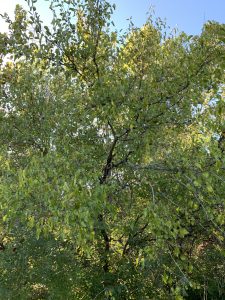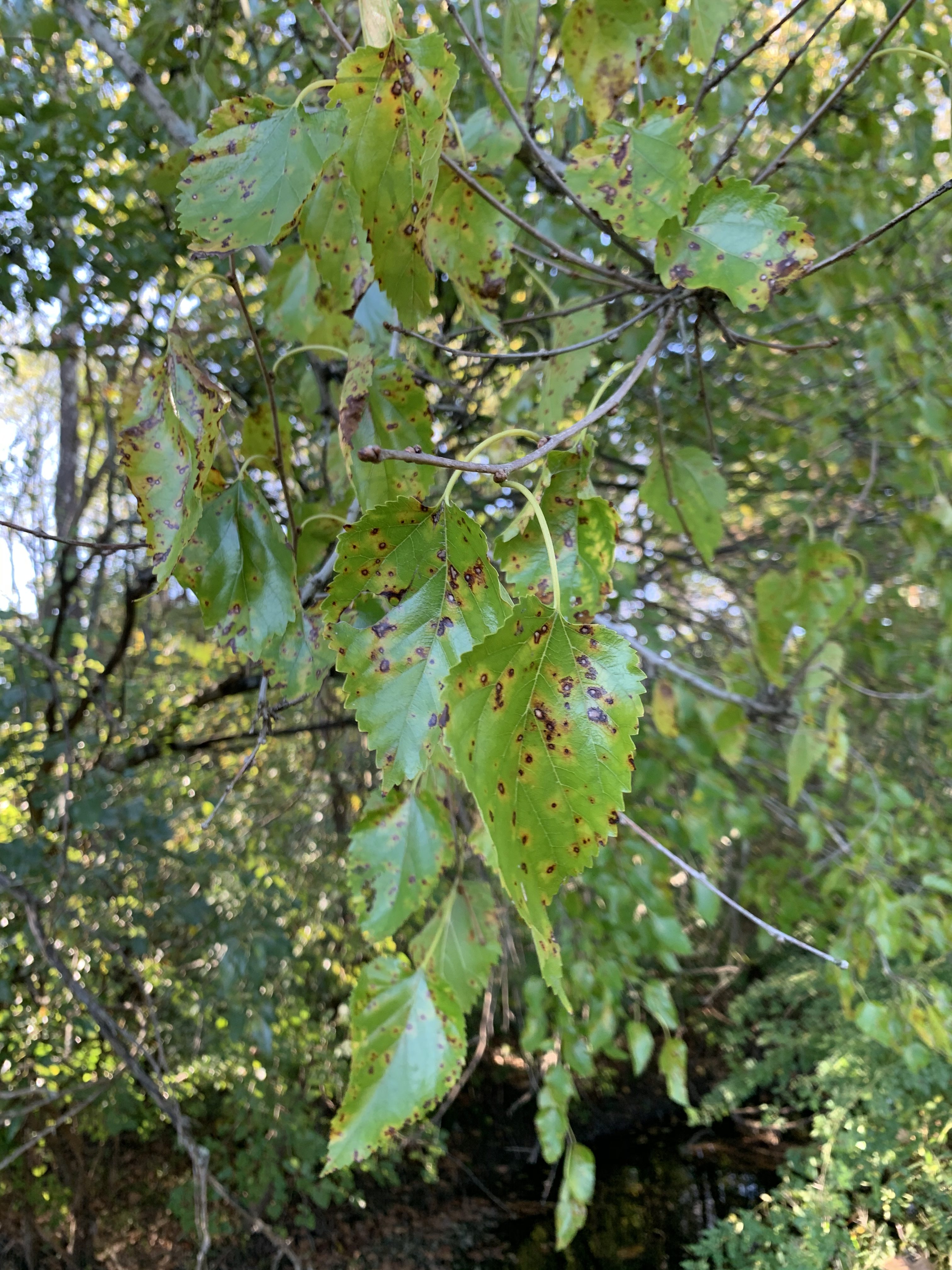
Elm tree
I observed my organism on October 14th, 2019 from 4:20 P.M. to 4:55 P.M. For my organism, I picked the tree that is my third organism that I will be tracking throughout the semester. In relation to my actual sit spot, my organism is directly across from me. I identified my organism as the Siberian Elm Tree.

Elm leaves showing alternate pattern and spiked edges.
My tree has dark brown and rigid bark towards the bottom and base of the trunk and lightens to a gray colored bark towards the top branches. I noticed the trees upper limbs were covered in lichen and that the bark also went from visually rough at the bottom to smooth looking at the top. The tree showed no signs of losing leaves although majority of the leaves are beginning to yellow and grow brown spots on them. Looking more closely at the leaves, I noted that they had spiked edges, sporadic veins, and no lobes on them.

Elm branches
The Siberian Elm tree is actually an invasive species that originated from Northern Asia. It was introduced in the U.S. in the 1800’s to serve as shade trees. Although they are resistant to Dutch Elm disease they are sensitive to herbicides and are prone to dropping limbs and breaking easily. Siberian Elm’s are also cold and drought tolerant.
At first I tried to identify my organism by searching up vague descriptions of my tree to Google but I ended up having to use an identification guide. It was difficult to identify this tree in particular because it is an invasive species making it uncommon on sites for Virginia’s trees. Although it was difficult to find the species, it was cool to learn the aspects that go into identifying a tree. I’ve never used a guide before so I had to identify one trait of the tree and then go to a different place of the guide to continue identification. For example: 1. Do the leaves have lobes? No, go to 10. Yes, go to 20.
I thought this experience was nice because I got to focus on one object instead of scanning an entire area. I noticed more features about my tree than previous visits. I like identifying organisms too because I’m not only expanding my knowledge but I am getting to know my sit spot more.



I had trouble identifying my organism as well. I ended up using a guide too! It was much harder than I anticipated, to be perfectly honest. Your pictures look super cool! I also really enjoyed being able to focus on one organism instead of everything in the surrounding area. Do you think in future sit spot times you’ll be more detailed when explaining how the tree looks (just because you studied it closely this time and probably notice more about it)?
I liked all of the detailed observations that you made, and I thought it was cool that you chose to identify the tree that you will be following throughout the semester. Great job!